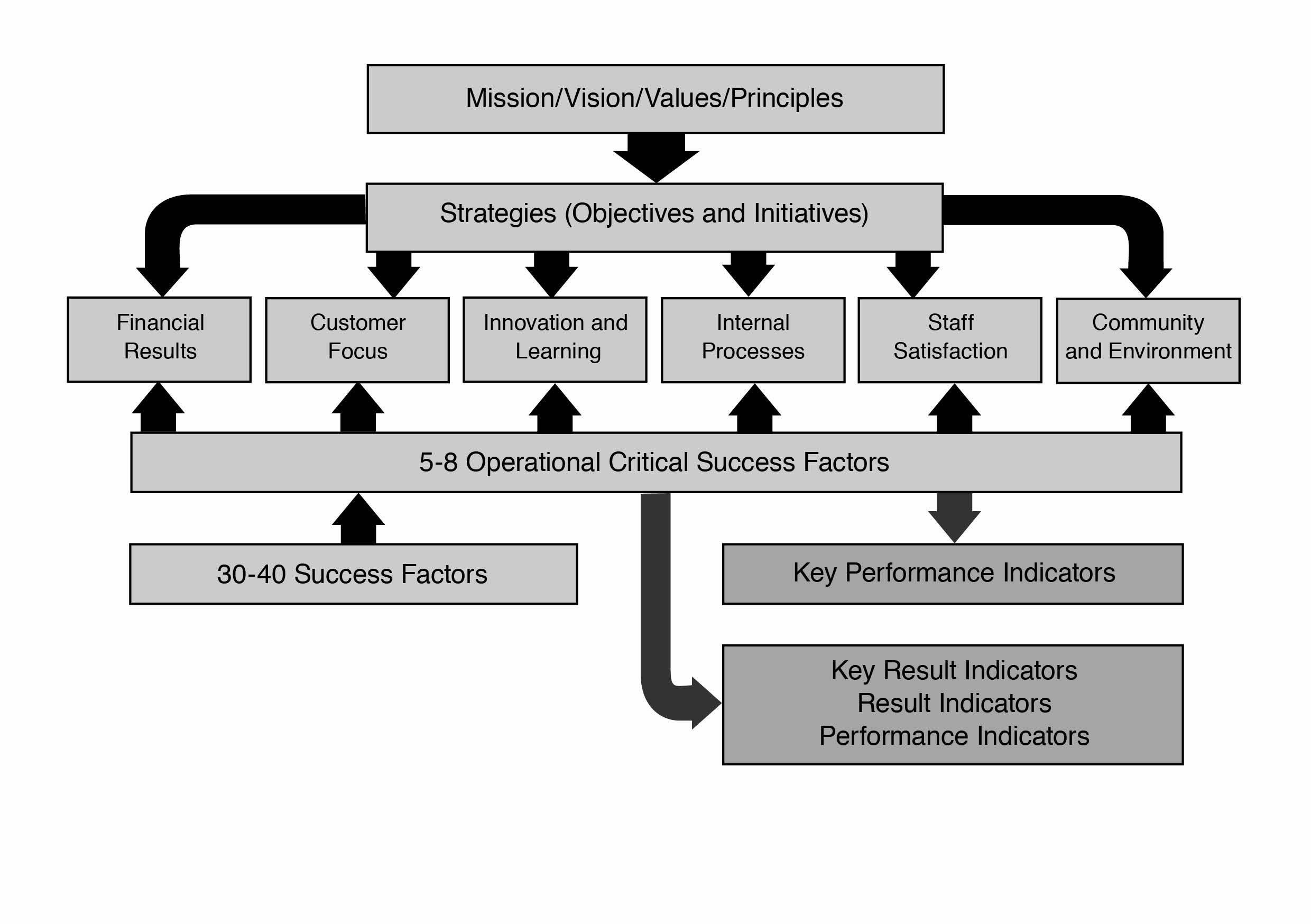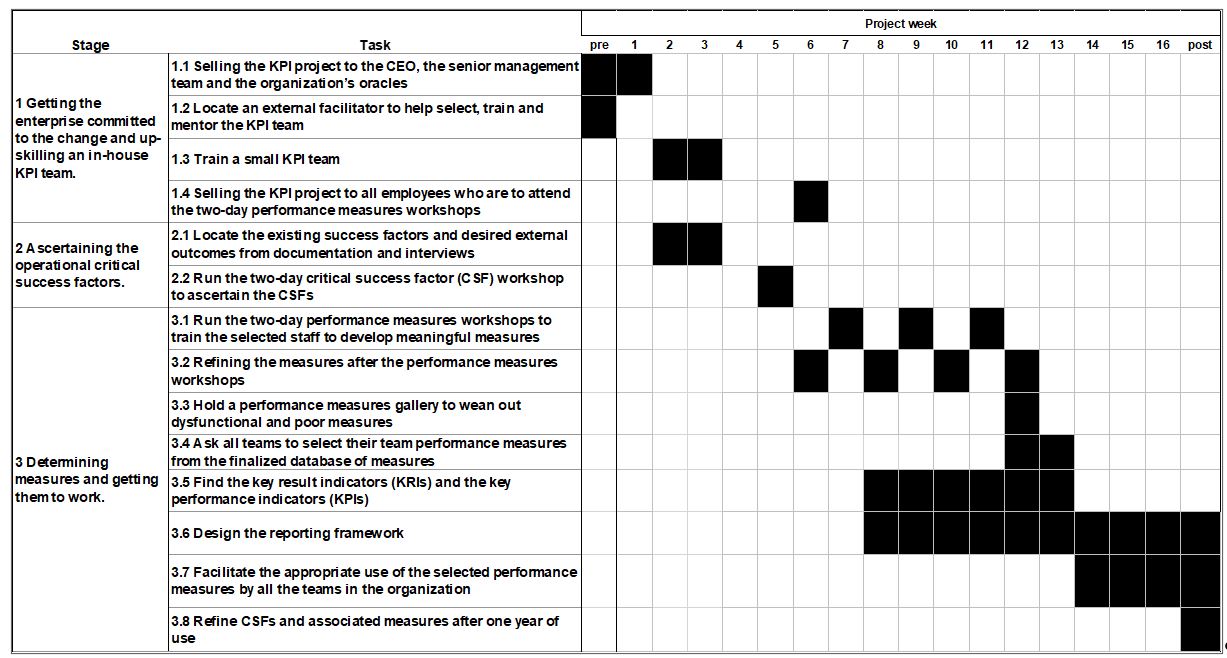By David Parmenter

Background
Understanding, measuring and managing critical success factors, is increasingly important to ensuring the survival and future prosperity of organizations, in these times of economic recession and uncertainty.
Most organizations know their success factors, however few organizations have:
- worded their success factors appropriately
- segregated out success factors from their strategic objectives
- sifted through the success factors to find their critical ones – their critical success factors
- communicated the critical success factors to staff
In these trying times knowing your CSFs maybe the deciding factor in survival. If your organization has not completed a thorough exercise to know its critical success factors (CSFs) performance management cannot possibly function. Performance measurement, monitoring and reporting will be a random process creating an army of measurers producing numerous numbing reports, full of measures which monitor progress in a direction very remote from the strategic direction of the organization. Very few, if any, of the measures in these reports could be defined as ‘winning KPIs’ as they have been derived independently from the CSFs.
Besides focusing on the relevant performance measures, thus significantly reducing the number of performance measures used, knowing ones CSFs will reduce the number of reports that are produced at the end of the month. Many of these ‘monthly’ reports are not related to the CSFs, and are reporting progress too late, well after the ‘horse has bolted!’ so the question has to be asked “Why do we have them?” Pareto’s 80/20 rule most certainly applies with reporting, with 80% of management’s need being met by 20% of the reports prepared.
The process outlined in this article will crystallize and communicate the organization’s CSFs. The beauty of the method, like all great methods, is that it is a simple methodical process, which can be run by in-house staff. In order to find our CSFs we need to first know our success factors.
Some articles on the topic
- Why ascertaining your Critical Success Factors is so important
- The three-stage process to ascertain your organisation’s CSFs and find the right KPIs
- The six common misunderstandings regarding critical success factors
- The 7 myths why KPIs do not work
- The 4 tasks to ascertain your organisation’s critical success factors
Some relevant success factors for these turbulent times
Set out below are some relevant success factors for these turbulent times:
- Supporting local businesses.
- Delivering in full, on time, all the time, to our key customers.
- Prioritizing all activities that will collect cash quickly from major accounts.
- Finding better ways to do the things we do everyday.
- Maintaining a safe, happy, and healthy workplace .
- Implementing innovative ideas from staff quickly.
- Finishing what we start.
- Starting only value-adding projects.
- Selling a greater share of our profitable products to our key customers .
- Increasing repeat business from key customers.
- Encouraging our key customers to be active advocates for our business.
- Increasing adaptability and flexibility of staff.
- Attracting quality staff to the organization.
- Maintaining a ‘stay, say, strive’ engagement with staff.
- Maintaining regular recognition of staffs’ contribution.
- Increased customer satisfaction
- Increased profitability
- Maximizing the use of our most important resource: our people
- Optimization of working capital
- Increasing the gross margin
- Optimal utilization of assets and resources
Some success factors to avoid
You need to avoid wording SFs as broad statements whose meaning is not clear to employees. In other words, such factors would fail the test of being able to be understood by a 14-year-old. Examples that are too broad to be a success factors include:
So what are Critical Success Factors
The CSFs are the ‘list of issues or aspects of organizational performance that determine ongoing health, vitality and well-being’ source: AusIndustry.
Better practice suggests that organizational CSFs should be limited to between five and eight regardless of the organization’s size. However, for a conglomerate the CSFs will largely be industry specific e.g. the CSFs for an airline are different to a retail record chain store. Thus there would be a collection of CSFs in the conglomerate greater than the suggested five to eight.
The relationship between CSFs and KPIs is vital, as illustrated in Exhibit 1. If you get the CSFs right it is very easy to find your winning KPIs e.g., once the ‘timely arrival and departure of planes’ CSF was identified it was relatively easy to find the KPI – ‘planes over 2 hours late’ for a well known airline.
EXHIBIT 1 How operational critical success factors drive the performance measures (extract from the CSFs toolkit)

There are a number of characteristics of critical success factors which are worth dwelling on. Critical success factors:
- Are worded so a 14-year-old can understand them and run the company.
- Will be no surprise to management and the board as they will have talked about them as success factors.
- Apply to more than one balance scorecard perspectives (e.g., the timely arrival and departure of planes impacts nearly all the BSC perspectives of an airline).
- Have a great influence on other success factors.
- Are focused in a precise area rather than being the bland statements that strategic objectives often are.
Finding the CSFs is Part of a Three-Stage KPI Project
Before I reveal the process to find your organization’s critical success factors I have to assume that not all readers will be familiar with my work, so a little introduction is in order.
I was asked by clients to further simplify the process and I used the pretext of the fourth edition[i] to rethink the approach to make it more user friendly. The new model incorporates all the original tasks in a three-stage process, illustrated in Exhibit 2.
EXHIBIT 2 The tasks are merged into a three-stage process (extract from the CSFs toolkit)
 2.
2.
Note: the blocks indicate the elapsed time not actual time taken.
[i] David Parmenter “Key Performance Indicators – developing, implementing and using winning KPIs” fourth edition, John Wiley & Sons, 2020
Purchase my latest toolkits which are on sale (over 40% reduction):
How to implement winning KPIs (180 page Whitepaper + electronic templates)
and buy the Database of Measures and Associated Success Factors 4th Edition
